
Category Archives: Syria
Defeating Da’ash
Open Access to Middle East Journals and Newspapers
For anyone doing research on the Middle East for the past two centuries, there is an incredible archive online. Details below:
Below is a list of Open Access historical newspapers and other periodicals in Middle Eastern Studies.
Most titles on the list have been digitized by independent projects across the globe and may not have been fully cataloged. It is often difficult to find and access them on the web or through catalogs such as HathiTrust, AMEEL, Gallica, Revues, WorldCat, etc.
We welcome your comments and suggestions of additional titles to include. Please use the comment feature at the bottom of the page.
For the list of active Open Access journals follow this link:
Alphabetical List of Open Access Journals in Middle Eastern Studies
132 titles as of May 14, 2015.
A funny thing happened on the way to the Islamic State
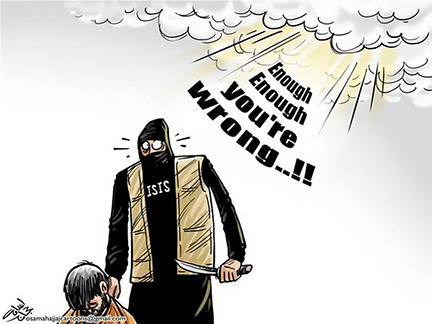
Newsweek has an interesting article by Christiane Gruber, an associate professor and director of graduate studies at the University of Michigan, about Muslim cartoons against ISIS. Check it out here.
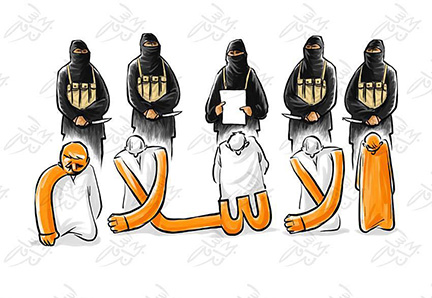
The Un-Islamic State
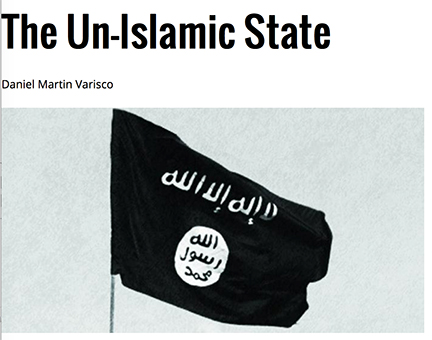
How Islamic is the Islamic State known as ISIS, ISIL, IS, Daesh and the new caliphate? To the extent that any group claims to be Islamic, quotes Quran and brandishes the rhetoric of the faith, ISIS is clearly presenting itself as an Islamic sect. To the extent that they have bastardized just about every other Islamic worldview, they are certainly not in the mainstream. Their appeal is not to Muslims who know the history of their faith, but to the disgruntled youth of the West and traumatized youth of the region. And, most importantly, ISIS is, ironically, the revenge of Saddam Hussein. This calculating and blood curdling group was formed not by madrasa-trained clerics but by former intelligence and military cronies of Saddam’s regime.
For the rest of this essay, click here.
Do Bodies Count…
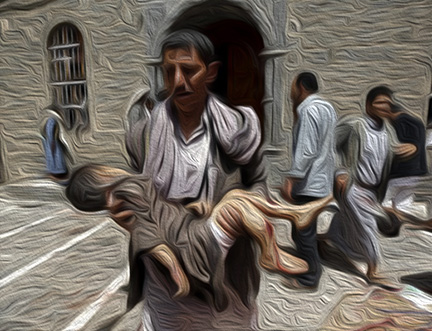
Do bodies count or do we just count bodies? The tally of victims over the past week continues at a fierce pace. The dead in Yemen are not even being counted as many corpses now are rotting where they fall. UNICEF says only 74 Yemeni children have been killed since the bombing by the Saudi Coalition began, but that is surely an understatement. Hundreds of civilians have died and numerous soldiers and militia on both sides. A few days ago Somali Shabab ruthlessly murdered almost 150 students at Garissa University in Kenya, separating the Christians out from the Muslims. Add this to the killing by Boko Haram in Nigeria. Now in Tikrit mass graves are being found that tell the story of 1700 Iraqi soldiers executed. And ISIS has now taken over most of the Yarmouk Palestinian Camp in Damascus with more dead bodies and many more to come.
We are witnessing a killing frenzy, but the daily reports might as well be a Hollywood film or a shoot-em-up video game. How many bodies must there be before the killing stops? Operation Decisive Storm in Yemen is turning out not to be decisive but divisive, creating chaos in Saudi Arabia’s poor neighbor to the south. The shock-and-awe strategy is no doubt appealing to the arms dealers worldwide; their champagne glasses must be tinkling with every bomb that is dropped. The massive arsenal raining down destruction on Yemen can easily be replaced, but not the bodies of the victims. The killing continues on the ground as well in Yemen, a political nightmare engineered by former President Ali Abdullah Salih to regain power. But what would he regain power over? A country devastated beyond the current economic collapse, a land where his unchecked gluttony left Yemen the poorest country in the region, a people pitted against each other with the encouragement of foreign powers? A pile of corpses as high as a mountain, a mountain of utter despair? Continue reading Do Bodies Count…
Library of Congress on the Near East

The Library of Congress has a very nice website with online resources regarding its collection of Near Eastern materials.
Cult-ivating ISIS
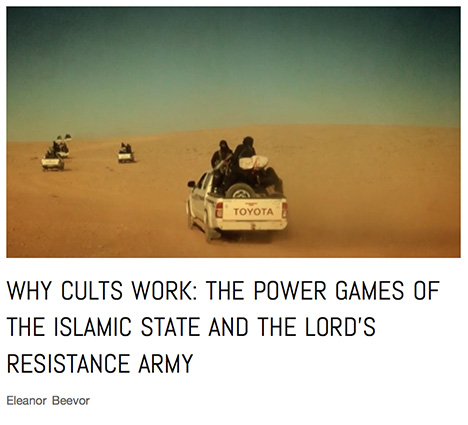
There is an excellent analysis of ISIS as a cult recently posted on War on the Rocks.
Here is the start, but click here for the full article…
Why Cults Work: The Power Games of the Islamic State and the Lord’s Resistance Army
by Eleanor Beevor
Graeme Wood’s article “What does ISIS really want?†has become the most discussed foreign policy article of the year. Yet the piece’s power lies not in the title question, but in Wood’s blunt assessment of a paradox that leaves Western leaders flummoxed: How does one explain the traction of the Islamic State in Iraq and the Levant (ISIL), while also denying its religious legitimacy, in order to combat anti-Muslim bigotry? Wood didn’t mince words in refuting this hesitancy:
The reality is that the Islamic State is Islamic. Very Islamic… the religion preached by its most ardent followers derives from coherent and even learned interpretations of Islam.
What follows is a fascinating piece of research, and a frustrating read. Despite addressing all the right aspects of ISIL’s ideological content to understand its power, Wood’s argument is guided by the wrong question: “How Islamic is ISIL?†For him, denial of ISIL’s Islamic nature is why we fail to understand it. The analytical pitfalls of quantifying “Islamic-ness†should be self-explanatory. Are some of Islam’s 1.6 billion practitioners less Muslim than others if they are less violent? How do we explain the religious devotion of politically “quietest†Salafism, compared to the British ISIL fighters who purchased Islam for Dummies pre-departure? This is not to say that religion is irrelevant in the analysis of ISIL. ISIL uses Islam as an existential anchor, so its actions have to be influenced by it in order to work. It also freely capitalizes on global Islamist sentiment. But to say the whole structure is uniquely, potently Islamic is not just a logical fallacy, but part of the very illusion that sustains loyalty to it. Actually, the features that Wood claims represent ISIL’s Islamic orthodoxy – its obsession with “purity†and the apocalyptic prophecy it stakes its claim on – have “been done,†and not just by Islamists. This is revealed by comparing ISIL with another notoriously violent army, led by another self-styled holy man.
ISIL and the Lord’s Resistance Army (LRA) represent grabs for power, but power of a cosmic kind, beyond what human society can grant them. In examining both, I suggest a word substitution. The ways in which ISIL works, to extraordinary success, are not uniquely Islamic. They are uniquely “cultic.†And to examine ISIL as a cult is to see chinks in its armor. ISIL’s territory may be shrinking, but that alone won’t kill the loyalties of its cadres, nor slow the spread of its bloody sectarian ideology. In ISIL, as in the LRA, knowledge is power. If we can challenge the leaders’ tight hold on that power, ISIL’s ideological grip on its fighters might just begin to crumble…
